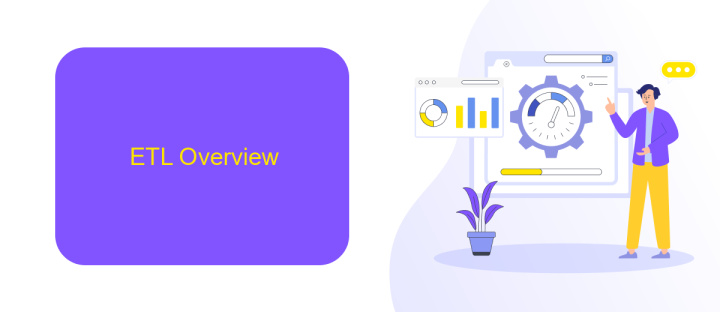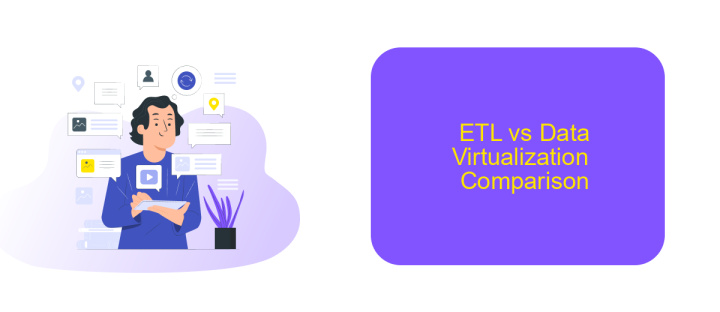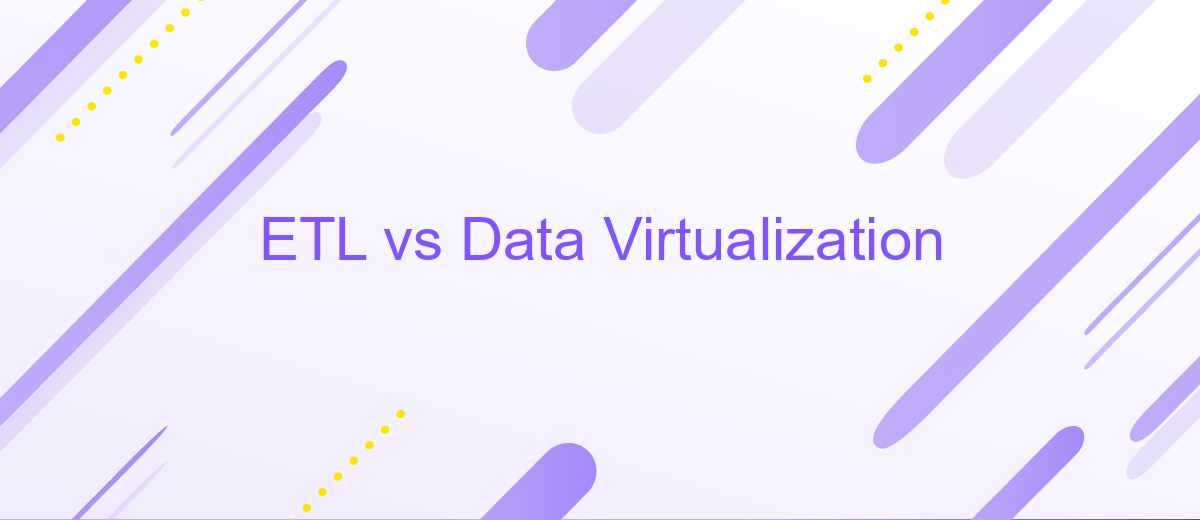ETL vs Data Virtualization
In the ever-evolving landscape of data management, businesses face the critical decision of choosing between ETL (Extract, Transform, Load) and Data Virtualization. Both methodologies offer unique advantages and challenges. This article delves into the key differences, benefits, and use cases of ETL and Data Virtualization to help you make an informed decision for your organization's data strategy.
Introduction
In today's data-driven world, businesses are constantly seeking efficient ways to manage and utilize their data. Two popular approaches for data integration are ETL (Extract, Transform, Load) and Data Virtualization. Each method has its own advantages and use cases, making it crucial for organizations to understand their differences and choose the right one for their needs.
- ETL involves extracting data from various sources, transforming it into a suitable format, and loading it into a data warehouse or other storage systems.
- Data Virtualization allows users to access and query data in real-time, without the need to physically move or transform it.
- Both methods can be complemented by integration services like ApiX-Drive, which streamline the process of connecting and managing data sources.
Choosing between ETL and Data Virtualization depends on factors such as data volume, latency requirements, and integration complexity. Understanding these approaches and leveraging tools like ApiX-Drive can help businesses optimize their data strategies and achieve better decision-making capabilities.
ETL Overview

Extract, Transform, Load (ETL) is a fundamental process in data warehousing and analytics. It involves extracting data from various sources, transforming it into a suitable format, and loading it into a target database or data warehouse. This process ensures that data is consistent, reliable, and ready for analysis. ETL is particularly useful for consolidating data from disparate systems, making it easier to generate insights and drive business decisions.
ETL processes can be automated using various tools and platforms. One such service is ApiX-Drive, which simplifies the integration of different data sources and automates the ETL workflow. ApiX-Drive enables businesses to set up data pipelines without extensive coding, ensuring seamless data flow between applications. By leveraging such tools, organizations can save time and resources, allowing them to focus on analyzing data rather than managing it.
Data Virtualization Overview

Data virtualization is a modern data management approach that allows users to access and manipulate data without requiring technical details about the data's physical location or format. Unlike traditional ETL processes, data virtualization provides a unified, real-time view of data from multiple sources, enabling faster decision-making and improved business agility.
- Real-time data access: Data virtualization offers immediate access to data from various sources, eliminating the delays associated with data extraction, transformation, and loading.
- Cost efficiency: By reducing the need for physical data replication and storage, data virtualization minimizes infrastructure costs and maintenance efforts.
- Enhanced data governance: Centralized access and control over data sources ensure better data quality, consistency, and compliance with regulatory standards.
One of the key advantages of data virtualization is its ability to streamline integration processes. Tools like ApiX-Drive facilitate seamless data integration by connecting various applications and services, allowing businesses to automate workflows and enhance operational efficiency. This approach not only simplifies data management but also empowers organizations to leverage their data assets more effectively.
ETL vs Data Virtualization Comparison

ETL (Extract, Transform, Load) and Data Virtualization are two distinct approaches to data integration, each with its own strengths and use cases. ETL involves extracting data from various sources, transforming it into a suitable format, and then loading it into a target system, such as a data warehouse. This process is often used for batch processing and is ideal for structured data that requires significant transformation.
On the other hand, Data Virtualization provides a real-time, integrated view of data from disparate sources without moving the data. It allows users to access and query data as if it were in a single location, which can be particularly useful for agile analytics and reporting. Data Virtualization minimizes data redundancy and can be more flexible in adapting to changing requirements.
- ETL is best for complex transformations and large volumes of data.
- Data Virtualization excels in providing real-time data access and integration.
- ETL processes can be more time-consuming and resource-intensive.
- Data Virtualization reduces the need for data replication and storage.
Both ETL and Data Virtualization have their place in a modern data strategy. For organizations looking to streamline their integration processes, services like ApiX-Drive can facilitate the setup and management of these integrations, ensuring seamless data flow and accessibility. The choice between ETL and Data Virtualization will depend on the specific needs and goals of the business.
- Automate the work of an online store or landing
- Empower through integration
- Don't spend money on programmers and integrators
- Save time by automating routine tasks
Conclusion
In conclusion, both ETL and Data Virtualization offer unique advantages and cater to different needs within the realm of data integration. ETL is well-suited for scenarios requiring historical data analysis and complex transformations, providing a robust framework for data warehousing. On the other hand, Data Virtualization excels in scenarios that demand real-time data access and agility, allowing businesses to quickly respond to changing data landscapes without the overhead of physical data movement.
Choosing between ETL and Data Virtualization depends on specific business requirements, data sources, and the desired outcomes. Tools like ApiX-Drive can further streamline the integration process by offering seamless connectivity between various applications and data sources, enhancing the efficiency of either approach. Ultimately, understanding the strengths and limitations of each method will enable organizations to make informed decisions, optimizing their data strategy to achieve better insights and operational efficiency.
FAQ
What is the main difference between ETL and Data Virtualization?
When should I use ETL over Data Virtualization?
What are the advantages of Data Virtualization?
Can ETL and Data Virtualization be used together?
How can I automate and integrate ETL or Data Virtualization processes?
Strive to take your business to the next level, achieve your goals faster and more efficiently? Apix-Drive is your reliable assistant for these tasks. An online service and application connector will help you automate key business processes and get rid of the routine. You and your employees will free up time for important core tasks. Try Apix-Drive features for free to see the effectiveness of the online connector for yourself.


